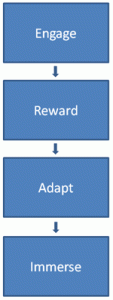I’ve had my Eee PC for a week now and made some surprising observations. While I was expecting to use this for the occasional bit of web surfing and e-mailing in front of the TV, it’s become the machine I use more than any other – mainly because of the almost instant power up time.
The shock discovery though, is that during this week I haven’t needed to use any of my Microsoft PCs at all – for anything. It would appear that pretty much everything I do is done through a standard browser. When did that happen? It also appears that the company is also slowly reducing it’s use of Microsoft Office products. Our intranet has a content management system at the heart of it, and people are now using this to produce all documentation, both internal and external. There are exceptions, obviously – the accounts team are still heavily dependent on Microsoft Excel, and the sales guys still like to have PowerPoint on their machines, but as a general purpose office package it has become increasingly redundant.
Had I needed to use any Office products, the Eee PC provides two options, Google Apps and Star Office, but the point here is not that there are free alternatives available, it’s that we just don’t use them any more. Instead we use a range of web technologies that allow us to create, perhaps counter-intuitively, a richer document than typical Office applications do. We have documents with video in, discussion threads attached directly to the Project Briefing documents, and social discovery systems embedded within the documents themselves.
This got me thinking about how we interact with our customers. With the exception of printed sales and marketing materials, pretty much everything is done either through e-mail, or via the community sections of our web site – we’re even starting to experiment with things like Twitter. Even PDFs are starting to lose their appeal as they too don’t provide the level of interaction that we’ve come to expect from the intranet.
It appears, for us at least, that the standard “one way” document type is succumbing to a new interactive document type – dynamic documents that leverage relationships between people.
Will office e-mail be the next to go?

